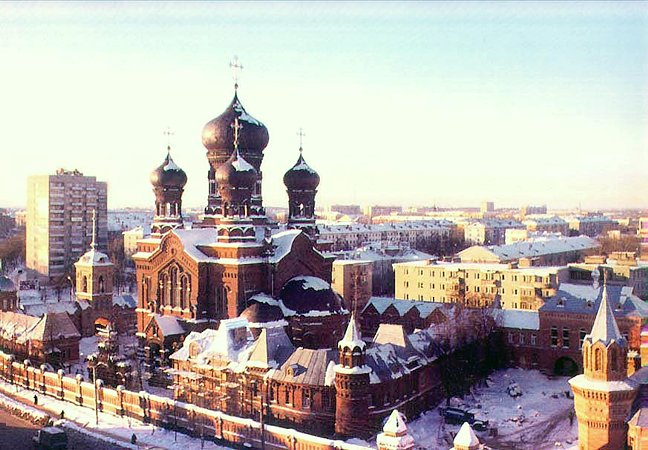Mikhail Lermontov (part 2)
08.12.2015Kostroma and Ipatiev Monastery
09.12.2015Ivanovo, the Textile capital of Russia
Although Иваново (Ivanovo) is not as prestigious as other cities of Золотое кольцо (the Golden Ring), it is still worth a stop. Ivanovo is шутливо называют городом невест (jokingly called the “City of the brides”). The reason of such a nickname come from the fact that Ivanovo is the leading national producer of cotton fabrics, and textile workers are mainly women. Thus, the main population of the city are women.

The textile capital of Russia
The city grew from a small village, known since the 16th century. The villagers were working on “linen fishing”, preparing the canvas. Later, from small handicrafts grew factories that produced high quality fabrics.
The demand for Ivanovo’s cotton does not only interest the Russian national market. Most of the production is bought by British merchants. You can discover the history of the development of the city’s main activity at the Ivanovo Textile Museum, where you will learn everything about cotton and its production. The architectural monuments of the city are also related with its industrial history.
Среди них особое место занимают жилые постройки, принадлежавшие богатым фабрикантам (among them, a special place is occupied by the residences of the rich manufacturers). The majority of them have been constructed in the 19th – beginning of the 20th century in a neoclassicism and early-modernist style. They are richly decorated, sometimes reminding of medieval castles.
Around Ivanovo
Ivanov is the centre of the district where can be found settlements that have left a vivid impression in the history and culture of Russia. The small town of Shuya, was once the family estate of Prince Skopin-Shuisky. One of the member of this family even acceded to the throne for a short time.
The Palekh miniature
The villages of Palekh and Holuy have been long known for their unique craft. The residents of these villages were famous for their icon-painting, wood carving and embroidery. The style of Palekh painting is unique in the way it differs by its complex composition, graceful lines, fine attention to details and rich colors.
Before the 1917 revolution, Palekh masters painted icons, but с приходом советской власти религиозные сюжеты попали под запрет (with the arrival of the Soviets in power, religious subjects fell under the ban) and icon painting workshops were closed. However, the art of Palekh painting was not lost.
Masters, in search of a livelihood began to paint boxes made of papier-m?ch?. Палехская миниатюра (The Palekh miniatures) usually represent characters from literary works, fairy tales or folk songs. Сегодня палехские шкатулки – один из самых популярных сувениров из России (today, Palekh boxes are one of the most popular souvenirs from Russia).
The Palekh icon painting has known a revival since the 1990s.

Тамара Мелентьева
 ENROLL!
ENROLL!